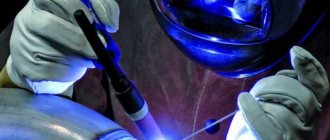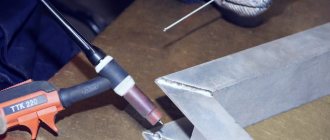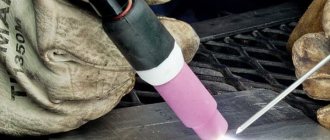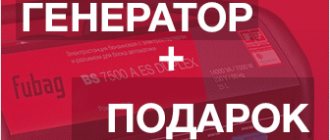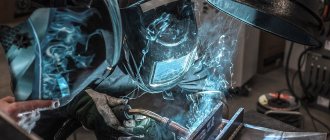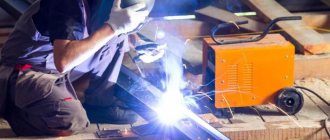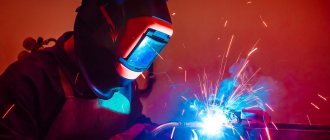During the assembly of components of complex equipment operated in aggressive environments, in the process of repair work, it becomes necessary to connect two metals - aluminum and stainless steel. These alloys are difficult to weld together and form a hermetically sealed but fragile connection that cannot withstand dynamic loads. Two methods have been developed for welding aluminum and stainless steel. Each of them will be discussed in detail. But first, a few words about the features of alloys.
Differences between metal soldering and welding
There are two main methods of joining two metals: welding and soldering. In the first case, the elements are held together by melting the edge of the metal. This can be either heating or bonding using pressure. In the case of soldering, the workpieces are fastened together using filler material - solder.
In some cases, soldering is a more gentle and economical way of joining workpieces. Soldering also has a number of advantages:
- Both parts do not heat up to the melting point. In this way, it is possible to preserve their physical and chemical properties.
- The workpieces do not require thorough cleaning and processing, as is required when welding.
- Soldering equipment costs much less than welding machines.
- Possibility of manufacturing complex units and structures.
- The strength of the resulting joint. The parts do not bend or deform after soldering.
Let's take a closer look at the methods of soldering different metals.
What it is?
Argon welding implies the mandatory use of an electric arc and inert gas during the work process. The objective of this technology is to reliably protect the weld pool from oxidation of the surface of metal edges, which occurs under the influence of oxygen during metal melting and impairs the strength of the weld.
For this reason, argon has gained popularity and is widely used for welding. The inert gas argon has certain properties, which are as follows:
- the gas is several times heavier than air, therefore, during welding, oxygen is actively displaced from the cavity of the weld pool - this is how the metal is protected from oxidation;
- Argon is inert from a chemical point of view, so it does not react with other substances, including metal.
Welding in an argon environment is permitted using tungsten non-consumable or conventional consumable electrodes. The choice of electrode type depends on what materials are intended to be joined by welding. The task of selecting electrodes is facilitated by special reference books that indicate the type of material and the recommended diameter of the electrode, as well as its variety. Argon arc welding has its certain advantages and a number of disadvantages. The advantages of the method are:
- as a result of effective protection, the welding seam is strong and free of slag and foreign impurities;
- during the welding process, the metal warms up moderately, so the workpieces being welded are not deformed, which makes it possible to work with even the most complex and critical structures;
- it becomes possible to join not only materials of homogeneous composition, but also dissimilar metal alloys that cannot be joined under other conditions;
- Due to the use of an electric arc, a high-temperature regime is formed, which allows you to perform work at an intensive pace.
Disadvantages inherent in electric welding in an argon gas cloud:
- welding equipment is subject to precise and complex adjustment;
- The welding technique is quite complex, requiring theoretical knowledge and practical skills, so it is not suitable for a novice welder.
Soldering of non-ferrous metals
Products made of non-ferrous metals require precise fitting. That is why they are often soldered rather than boiled. Let's study certain types of non-ferrous metals and their bonding using soldering.
Always secure both workpieces using a vice, clamps or other fasteners. Especially if you are working with large parts. Vibrations or shifts during soldering can warp the seam and the solder can drip. This will make the joint brittle and, over time, cracks or fistulas may form on it.
Soldering copper
Copper is a fairly common metal in everyday life. Water pipes, electrical cables, electronic components - they are all partially or completely made of copper.
There are mainly two methods for soldering copper:
- High temperature (working temperature about 600 ˚С);
- Low temperature (working temperature up to 450 ˚C).
In this article, we are considering soldering at home, so we will take low-temperature technology.
To solder copper you will need:
- Solder. It is mainly made from alloys of tin (95-97%) with copper, antimony, bismuth, silver, and selenium. Silver-containing solders have the best properties. Three-component types, which include tin, copper and silver, are also widely used. The use of tin-lead solders in production is limited due to the harmfulness of lead. At home, you should also protect your lungs from lead fumes. Use an active hood.
- Flux for soldering copper (activated, acidic, non-acidic, anti-corrosion).
- Gas-burner.
Large industries and factories often use solder paste. Most often it contains: flux, small particles of solder and special additives.
Let's look at the step-by-step technology for soldering two copper elements:
- Flux is applied to both parts. They cover the joint and the area where solder will be applied.
- Solder is placed at the joint. This can be tin wire or a special paste.
- The resulting compound is heated using a gas burner. Solder is distributed over the joint, as well as partially over the area near the solder.
- The resulting workpiece is left to cool. At this moment, you cannot twist or bend the resulting part. The joint must be completely cool before the solder can fully harden.
- Remaining flux is removed using an abrasive brush.
Do not point an open flame directly at the solder. It should melt and fill the seam due to heating of the edges of the parts.
Soldering aluminum
Aluminum is a rather capricious material. Many experts believe that it is simply impossible to fasten two aluminum blanks at home, since the place of fastening must be heated to a temperature of about 600 ° C, and this risks burning out the aluminum sheet itself.
But this statement is not entirely true. You can solder two aluminum elements if you use a special flux and solder. Let's take a closer look at all the components that will be needed to work with aluminum:
- Solder. The best solders for working with aluminum are those containing: silicon, aluminum, copper, silver and zinc. These include domestic solder “34A” or its foreign analogue “Aluminium-13”.
- Flux. It is better if it contains ammonium fluoroborate with the addition of triethonalamine. Some people use regular borax.
- Soldering iron with a power of at least 100 W.
Solders with a high zinc content have better anti-corrosion properties.
Step-by-step guide to soldering aluminum blanks:
- Clean both workpieces from dirt and dust.
- Remove the oxide film using sandpaper. This operation is performed in order to reduce the oxide layer that instantly forms on the surface of the aluminum.
- Flux is applied to the joint.
- Solder is applied evenly and gradually, without subjecting the surface of aluminum workpieces to constant heating.
- The resulting joint is cleaned using a wire brush or fine sandpaper.
Soldering sheet metal
Ordinary tin is fastened quite simply. Metal without impurities or coating most often produces an even seam and does not change under the influence of high temperatures. To solder sheet metal you will need:
- Solder. Solders based on tin and antimony are mainly used. These include POS-40 or POS-30. In some cases, POS-90 is used, which contains lead.
- Flux. Both hydrochloric acid and ordinary rosin will do. Fresh oxide film on tin can be removed very easily.
- Soldering iron with a power of at least 40 W.
Soldering technology:
- Clean the tin elements from dirt and dust.
- Apply rosin to the joint.
- Place solder on the joint and use a soldering iron to melt it.
- Clean the resulting area using fine sandpaper or a wire brush to ensure a smooth seam.
Process Features
The work of joining non-ferrous alloys and casting ferrous metal in an argon environment requires a certain skill, so it will not be easy for a beginner to weld such workpieces with his own hands. When performing welding work, it should be remembered that titanium, copper, aluminum, silumin and bronze have physical and chemical differences compared to cast iron and steel. When melting steel or non-ferrous alloys, the liquid metal tends to absorb impurities formed as a result of melting under the influence of high temperatures, which leads to the presence of porosity in the weld. The inert gas used to protect the molten metal eliminates the penetration of foreign melting products into the weld pool, thereby strengthening the seam.
Argon arc welding is a universal method, the technology of which is used for repairing body iron, the inner corner of a car door, aluminum body elements and crankcase, for installing additional equipment and welding thin metal. Often, to perform such work, the technique of using pressurized gas is used, and the consumption of argon even in this case will be less than that of helium when using it. The parts can be joined end-to-end or overlapping; most often the work is carried out with a non-consumable tungsten electrode, and an oscillator is used to ignite the electric arc.
The main point is the preliminary preparation of the metal for welding: the edges intended for joining are cleaned of the surface film of oxides, and then degreased with a solvent. The basis of welding is the supply of a non-consumable electrode, which must be sharpened at an acute angle of 25–30° before use if workpieces made of titanium, steel or copper are to be joined. To join aluminum, there is no need to sharpen the electrode, since when ignited, a round bead forms on it, which will form the weld pool.
Depending on the type of materials being welded, the additive is also selected. This can be wire made of aluminum, stainless steel, as well as copper-nickel or brass rods. The alloy composition of the filler materials is indicated in the corresponding reference book according to the markings located on the end of the rod
In addition, it is important to choose the right welding machine. For example, to connect a copper part with aluminum, the thickness of which does not exceed 7 mm, you will need powerful industrial-type welding equipment that provides power up to 400–500 A
Setting up the device before starting work is an important condition, and the current and voltage are selected based on the size of the tungsten or conventional electrode.
Modern devices have the “Crater Filling” option; it is used to ensure smooth fading of the arc after the formation of the seam is completed. For example, if you are connecting parts whose thickness is 3 mm, then the value of this parameter is set to 2–3 seconds. In addition, before welding, pre-purge of the work area is also set up. This action is necessary to ensure that weld defects do not appear during the work, since porosity appears in the uncooled metal. The sequence of the welding process is as follows:
- the edges are cleaned, and if the material is quite thick, then bevels are made for the welding seam, and then the metal surface is degreased;
- all parts are fixed with special clamps, after which you can begin the welding process;
- an electric arc is ignited, and if this procedure is contact, then a button is pressed on the torch and the electrode is touched to one of the edges of the metal, but with non-contact ignition there is no need to make such a touch;
- the next step is to perform a weld pool; for this, it is allowed to make several transverse oscillatory movements of the welding electrode along the material being joined in the area of the weld, while the additive should begin to melt and be evenly distributed in the weld pool;
- During operation, an inert gas blows over the welding site, but this should happen moderately so as not to splash the metal and interfere with its melting.
Experienced welders recommend joining thin sheets of metal without using an additive. To make a weld, the tungsten electrode is positioned at a slight angle so that the edge of one sheet meets the edge of the second sheet.
Read more about argon welding below.
Soldering of ferrous metals
The quality of fastening of steel products depends on several factors:
- steel grades;
- porosity of workpieces;
- level of cleanliness of the joining seam.
Tin or brass alloys are chosen as solder. They are used depending on the task at hand. An easier way is to use tin. It is easier to work with, however, the final seam will not have a high level of strength.
Brass-based solders are much stronger, but you will need special equipment to work with them.
The work process at the preparatory stage is practically the same. In both cases, the parts are cleaned of dirt and rust. Fix with clamps or a vice. Orthophosphoric acid is used as a flux. After this comes the soldering stage.
Soldering steel with tin
When soldering with tin, select a soldering iron with a power of 100 W or more. To obtain a high-quality seam, both parts are pre-tinned, after which tin solder is fed into the finished seam and soldering is completed.
Soldering steel with brass
Brass melts at temperatures above 900 °C, so to work with such solder you will need a gas torch. It is important to heat both elements evenly. Otherwise, the brass will quickly melt. It will only adhere well to the edges of steel workpieces (which can cause brittleness and stress failure), which will contribute to the formation of cracks in the final product.
Working with a semi-automatic machine
Welding a thin sheet of metal with a semi-automatic machine falls under the same category of work as welding with an inverter, and also allows for a wide variety of joints formed. In this case, steel sheet products can be welded not only end-to-end, but also overlapping.
The formation of an overlap joint begins with the fact that the metal blanks to be joined are laid one on top of the other with the overlap required according to the welding conditions. Then, by pressing down with any available weights, they are connected in such a way that their edges are pressed tightly.
Ideally, there should be a gap of no more than 2 millimeters between thin sheets of metal.
After this, according to the instructions, set the required welding current. When welding overlapping sheets of millimeter thickness, the current is selected in the range of 30-50 Amperes.
First, sheet products are grabbed at the joint. The gripping is performed by short jumpers applied by intermittent touching of the electrode to the contact with its rapid tearing off and touching again.
This procedure for working in the arc zone makes it possible to maintain a continuous combustion mode, while the thin material does not have time to cool down much.
Upon completion of the formation of the jumpers, the sheets of metal are finally connected with a continuous seam, interrupted only at already welded places. In this case, the welding electrode is sometimes deflected into the low-temperature zone of the joint, which eliminates severe warping of the metal.
Tips for proper and strong soldering of metals
When working with steel or other metals, you must adhere to basic safety rules and also know some of the nuances of soldering.
How to heat and cool metal
An important step before starting work is preparing the workpieces. And here you need to know for sure which alloy you will solder or check it yourself:
- See how a metal workpiece reacts to heating with a soldering iron or torch. How quickly an oxide film forms on the surface. It’s better to know this in advance and for sure, otherwise subsequent work will be done in a hurry.
- It is best to warm up the prepared and secured parts gradually. Make sure that no overheated spots appear on the metal. The soldering area must be heated evenly over the entire area.
- Do not heat only the butt seam; also work on the area near the joint. Most often, you need to warm up 0.5 - 2 cm, depending on the purpose of soldering and the dimensions of the elements being connected.
- Use only soldering irons or torches that produce solder at operating melting temperature.
- Do not cool the finished seam with cold water or other liquids. Let the metal “rest” and cool evenly for several minutes in the open air.
- Remove soldered workpieces from a vice or clamps only after the solder has completely cooled.
How to weld aluminum with argon
Aluminum is one of those metals that everyone has on their tongue, even a child knows that aluminum is a metal.
This metal is used in industrial enterprises; dishes and even elements for microelectronics are made from it, and this is a very specialized niche.
BUT even such wide popularity of this metal did not ensure that everyone knew how to handle it. In most cases, a beginner will not know which way to approach a metal such as aluminum.
It is because of this that working with one of the most common metals is so painstaking and not easy. We will tell you more about the oxide film in another article, since this is a very broad and painful topic.
Another article will tell you about igniting and maintaining arc stability and the formation of a weld pool. This article will give you all the necessary information on how to cook aluminum using argon even in the wild.
Which metals are most strongly soldered to each other?
Unlike welding, in soldering the main indicator of the quality of the finished product is not the grade of steel or metal, but the choice of solder, as well as the technology for forming the solder seam itself. So the question here is rather about which metal, which solder sticks best to which metal. Of course, the closer in composition and density the solder and metal are, the better the adhesion will be. In the end, it all comes down to choosing the right solder for each individual case.
You also need to ensure that when connecting two metals, no electric couples are formed. Otherwise, the connection will rust and collapse from the slightest moisture. So a compatibility table for connecting non-ferrous metals with each other would be appropriate here.
The letter “A” in the compatibility table means “limitedly permissible in atmospheric conditions.”
Process
The step-by-step instructions for beginners on argon welding of aluminum indicate that an even seam on the workpiece can be obtained by tackling on both sides. The filler wire must be introduced immediately after creating the weld pool. Braking often ends up burning a hole in the metal. The normal length of the electric arc should be about 0.3 cm. Professionals sometimes give a different value.
The electrode position should always be at an angle of 80 degrees to the surface. The wire is held at right angles to the electrode itself.
Thin metal is welded by moving the electrode along the joint, without making transverse movements; zigzag movements are possible when working on aluminum with a thickness of 0.3 cm.
Another subtlety is that the wire is moved in front of the electrode, and not vice versa. The seam must be completed by pressing a special button. It puts the device into arc extinguishing mode. Only after the special timer has triggered does the final shutdown occur. The burner must not be moved until the argon blowing is completed. A correctly executed seam has a ribbed surface; there should not be any pores or cracks in it.
A separate topic is the work of welding car wheel rims. Alloy wheels are repaired by fusing a rod onto the problem area. This method allows you to achieve a tight seam. At service stations they always use semi-automatic argon arc welding. They guarantee an extremely homogeneous supply of additives.
Chips and cracks are repaired in advance. Their depth is not important. The end parts of the defects are drilled, removing the stress in the metal layer. The oxide film on disks, unlike sheet metal, is often removed with abrasives. This is the only way to achieve shine; the edges must be treated with a solvent to remove grease.
For more information on aluminum welding, see below.
How to do soldering at home
Problems such as joining stainless steel parts using soldering and soldering stainless steel to copper are often encountered at home. Products made of stainless steel have been actively used in everyday life for many years, therefore, when for some reason they become unusable, any home craftsman has a natural desire to repair them himself. It should be said right away that soldering stainless steel parts is not so difficult, the main thing is to strictly adhere to the technology, as well as stock up on the appropriate tools and consumables.
Master the soldering technique on simple connections, and then try working with more critical parts
Before you start soldering stainless steel, it is very advisable not only to study the theoretical material on this issue, but also to become more familiar with the rules for its implementation using training videos.
To solder stainless steel products, you will need the following tools and consumables:
- a soldering iron powered by electricity with a power of at least 100 W;
- special soldering acid, which will be used as a flux;
- file or sandpaper;
- solder, specially designed for joining steel parts, based on tin and lead;
- cable made of steel;
- metal tube.
Soldering materials and tools
When choosing a soldering iron for working with stainless steel, you should opt for a tool with a power of 100 W. Using a more powerful device to perform such work is simply not practical.
The process of soldering stainless steel parts is carried out according to the following algorithm.
- First of all, it is necessary to thoroughly clean the area of the future connection, for which sandpaper or a file is used.
- After preparing the surfaces of the parts to be joined, it is necessary to apply flux to them, which, as mentioned above, uses soldering acid. The main task of the flux is to ensure high-quality tinning of the parts to be joined.
- After the surfaces of the parts to be joined are treated with flux, it is necessary to tinning them, which consists of applying a thin layer of solder consisting of tin and lead to them. If tinning was not successful the first time, then it is necessary to repeat this procedure, preheating the parts to be joined.
- Even after heating the products and re-processing them with flux, tinning may not be successful - the solder will simply roll off the surface of the parts, rather than lie on them as a thin film. In this case, you need to use a brush with metal wires, which can be easily made from a tube and steel cable. Before using such a brush, it is also necessary to apply flux (soldering acid) to the surface of the parts and only then, heating the future joint with a soldering iron, clean it with a metal brush. This simple technique allows you to effectively clean the surface of a stainless steel from an oxide film, which, as a rule, is the main obstacle to high-quality tinning.
- Once a thin layer of tin has been applied to the products to be joined, you can begin to solder them. This procedure is performed using a soldering iron and solder, which is used to fill the joint between the parts.
Argon welding of stainless steel using a tungsten electrode
Welding stainless steel in a protective argon environment is used mainly in cases where it is necessary to connect parts of small thickness.
This technology allows you to obtain high-quality and reliable connections with beautiful and neat welds. In the protective atmosphere of argon, welding of stainless pipes used for transporting various liquid and gaseous media is most often performed. The quality of welds obtained using this technology allows it to be used for connecting parts of pipelines operated under high pressure.
Connection of stainless steel pipes made by electric welding in an argon environment
Argon arc welding, performed with a non-consumable tungsten electrode, can be performed using alternating or direct current of straight polarity. The main working body when performing such welding is the torch, in which the electrode is fixed and from the nozzle of which an argon jet is supplied. The weld is formed by filler wire fed manually into the combustion zone of the welding arc. All movements made by the torch are also performed manually.
This is done in order not to remove the weld pool from the argon protection zone (this will negatively affect the quality of the connection). It is also necessary to take care of protecting the back side of the seam from ambient air, which is also blown with argon. Of course, this increases gas consumption, but the quality of all areas of the weld will be high.
Torch position for TIG welding
In order not to contaminate the surfaces of the workpieces being joined and not to melt the end of the tungsten electrode, they should not touch the base metal even during the ignition of the arc. That is why the technology of welding in an argon environment using a tungsten electrode involves the use of a special plate made of graphite or coal to ignite the arc. Only after ignition on such a plate is the welding arc carefully transferred to the stainless steel. A training video demonstrates this process well, which a novice specialist should definitely learn how to perform.
To prevent oxidation of the heated electrode and the newly formed seam, the argon supply should be turned off not immediately after welding, but after 10–15 seconds. This will have a slight effect on gas consumption, but this will increase the service life of the electrode and improve the quality of the weld.
https://youtube.com/watch?v=KX1U-YzGEww
Solder Types
Stainless steel products can be soldered with both soft solders made on the basis of tin and lead, and hard types of filler material, which includes more refractory metals.
Soft solder, due to the fact that it is based on tin, is a low-melting material characterized by high ductility and fluidity in the molten state. What is especially important when soldering stainless steel products is that it has good deoxidizing ability.
Properties of soft solders
More reliable connections both in production and at home can be achieved by soldering using hard solders. The metals from which they are made melt at a higher temperature than tin, which makes it possible to obtain reliable and durable connections with their help. Very often, materials of this type are produced on the basis of technical silver, which can contain up to 30% in their composition.
Main brands of silver solders
One of the popular types of hard solder is the HTS-528 material, which is successfully used for soldering not only stainless steel, but also copper, brass, bronze, nickel and other metals. Conveniently, it is produced in the form of a rod, the surface of which is already covered with a layer of flux. When working with such solder in a production environment or at home, you should keep in mind that its melting point is 760°.
HTS-528 solder is a rod coated with red flux. In addition to stainless steel, it is suitable for cast iron and non-ferrous metals
Selection of filler material
Since aluminum melts relatively quickly, if you choose the wrong diameter of the filler wire, you may not have time to feed it into the welding zone and form a seam. Therefore, the thickness of the solder should be the same as the thickness of the plates being welded. It is also necessary to be careful when choosing the chemical composition of the filler material. For example, a product made of duralumin cannot be welded with a rod for food-grade aluminum. A table with filler wire numbers and its purpose can help:
| Additive marking, no. | Purpose |
| 1070/1100 | AD1, AMts. |
| 5754 | For welding aluminum with magnesium admixture. |
| 1450 | For alloys used in aircraft construction. The additive is equipped with a titanium inclusion that strengthens the seam. |
| 5183 | For food containers and shipbuilding. |
| 5554 | For wheel rims and containers in the chemical industry. |
| 4043 | For alloys with silumin used in construction. |
Flux preparation
When soldering stainless steel, you should be very careful about choosing a ready-made flux or the recipe for making it yourself. The classic flux composition, which can be prepared at home, includes the following components:
- borax (70%);
- boric acid (20%);
- calcium fluoride (10%).
For soldering small-sized products, you can prepare a flux that will consist only of borax and boric acid mixed in equal proportions. Having mixed the components of the flux in dry form, it must be diluted with water and treated with the resulting solution at the site of the future connection.
Can aluminum be welded to stainless steel?
Clients often come to us with the question: “Is it possible to weld stainless steel to aluminum?” Simple types of welding - coated electrode, argon arc welding, semi-automatic welding - will not be able to perform this technological operation. Since when welding metals such as steel, copper, magnesium, titanium to aluminum, very fragile intermetallic bonds are formed. And this connection will not work well either for tightness or for mechanical loads. Therefore, this cannot be called high-quality welding. When there is a high need for welding aluminum with another metal, bimetallic transition blanks are used, but their production is a very difficult technological process and the cost of such a connection is very expensive. Therefore, we conclude that for mere mortals the technology of welding aluminum with other metals is out of reach.
As for aluminum welding services, you can always contact the Argon66 company in Yekaterinburg at Kosmonavtov 258/3. tel. +7 343 2020023
About welding of different metals, you can highlight an interesting article from ESAB, posted on their website in the “ESAB KNOWLEDGE CENTER” section
“Can aluminum be welded to steel using GMAW and GTAW?
While aluminum is relatively easy to bond to most metals by adhesive bonding or mechanical means, arc welding aluminum to other metals such as steel requires special techniques. When metals such as steel, copper, magnesium and titanium are directly welded to aluminum by arc welding, very brittle intermetallic compounds are formed. To avoid the formation of such brittle compounds, special means have been developed to isolate the second metal from the molten aluminum during arc welding. The two most common methods for arc welding aluminum to steel are the use of bimetallic adapter inserts and coating with dissimilar material before welding.
Useful tips
To perform stainless steel soldering efficiently, you should use the recommendations of experienced specialists.
- The power of a soldering iron, which must effectively heat the metal being joined, is in the range of 60–100 W, but it is better to opt for a 100-watt device. To solder large parts, such as stainless steel pipes, you will need a gas torch rather than an electric soldering iron.
- When choosing an electric soldering iron, it is better to opt for models equipped with tips that do not burn.
- The most economical and universal type of solder, which makes it possible to obtain high-quality connections for stainless steel products, is tin-lead rods. If you are soldering dishes that will come into contact with food or liquids, it is better to use pure tin as solder, which does not contain harmful impurities.
- The room in which soldering work is carried out must be well ventilated.
- When performing soldering, be sure to use personal protective equipment so as not to harm your health.
Welding equipment
Several types of devices are used:
- for manual electric arc welding with a consumable or tungsten electrode, working using MIG/MAG technology;
- supporting WIG/TIG modes;
- semi-automatic devices with argon supply.
When choosing a welding machine for stainless steel and aluminum, take into account the characteristics of the alloys from which the parts are made. It is better to use high-frequency alternating current; a small inverter is often chosen as a generator for the arc method. When choosing gas equipment, it is advisable to choose a burner with a lens equipped with a mesh; gas consumption will be less and it will ensure normal protection of the melt bath. A semi-automatic welding machine for welding aluminum and stainless steel should have a pulsed operating mode, and the “Coldarc” function is desirable.
If you take into account the characteristics of the metals when connecting aluminum and stainless steel workpieces, you can achieve good quality seams. Beginners are unable to work with dissimilar alloys; it is better to contact specialized organizations that provide welding services.
Welding aluminum to steel through bimetallic inserts
The method of welding aluminum to steel by applying metal coatings to steel edges is technologically quite complex.
Therefore, it is advisable to use such methods in the case of welding small products. In practice, the most widely used welding method is using intermediate bimetal inserts. Examples of such connections are shown in the figure: Bimetallic inserts are made from large-sized bimetallic plates, carbon steel and chromium-nickel, using explosion welding. This method was first proposed by F.I. Razduy. and Sitalov V.P.
Difficulties in welding aluminum to stainless steel
Stainless steel is a high-alloy steel, its composition includes non-ferrous metals and non-metals. Thermal conductivity is two times lower compared to carbon steels. The alloy heats up unevenly and concentrates at the contact point, which leads to burns in the weld area. When welding aluminum with stainless steel, it is necessary to maintain a small amperage and work at low currents. Permissible temperature in the working area is 500°C.
Aluminum conducts heat well, but when heated it actively oxidizes. To work with it you need a protective atmosphere. Another nuance is that aluminum alloys melt at 600°C, and the oxide film only melts when heated above 2000°C. Before joining, it is necessary to remove the oxide layer.
When laying aluminum with steel, it is important to maintain the gap size and take into account the high linear expansion of stainless steel.
Argon arc welding of aluminum and steel
The technology for argon arc welding of aluminum and steel is shown in the figure on the left.
To perform this, a combined coating consisting of a layer of copper and a layer of zinc is applied to the steel edges. The welding torch is installed in such a way that the arc between the tungsten electrode and the product is excited at a distance of 1-2 mm from the edge of the joint on which the filler rod is installed. It is also recommended to pre-coat the steel with a layer of aluminum, i.e. aluminization using t.v.ch. In this case, at the moment of heating during fluxing, aluminum melts and covers the steel edges with a layer 0.5-1.5 mm thick. In addition, it is possible to directly apply aluminum to steel in the form of beads, onto which the weld is subsequently laid.
Approximate welding conditions for aluminum and steel for a tungsten electrode with a diameter of 2-3mm are: current strength 80-130A, welding speed 6-12m/h, filler wire diameter 2-3mm. If welding is carried out using pre-laid aluminum beads, then the welding current can be increased to 160-180A, with an electrode diameter of 3mm.
Source
How to protect a structure or assembly from contact corrosion?
If for design reasons it is not possible to avoid unwanted contact of dissimilar metals, then attempts can be made to reduce galvanic corrosion using the following methods:
- painting surfaces in the area of their junction;
- application of compatible metal coatings;
- isolation of the connection from the external environment;
- electrical insulation;
- installation of non-metallic gaskets, inserts, washers in bolted joints.
Practice shows that in cases where the requirements for the admissibility of contacts of different metals are neglected, one has to pay dearly for this. Incorrect arrangement of contact pairs damages fastening units and metal structures and can cost human life.
Only registered users can leave reviews. Please register
